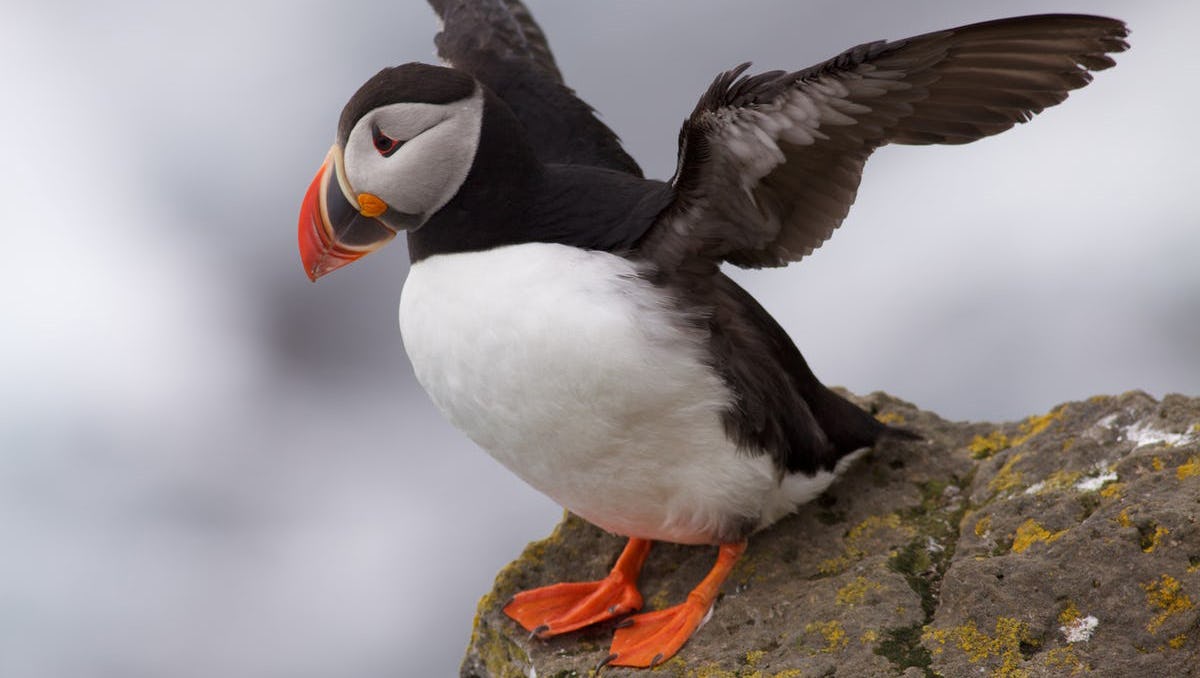Beyond Polar Bears: Biodiversity Loss Threatens Life in the Arctic

An Atlantic puffin, a bird native to the Arctic classified as vulnerable by the International Union for Conservation of Nature (IUCN). Photo: Boaworm
In late April, the Seventh Session of the Intergovernmental Panel for Biodiversity and Ecosystem Services (IPBES) met in Paris, France. The goal for the 132 member governments and contributing institutions was to summarise the magnitude of ecological destruction on the planet and map the way forward. Their Global Assessment of Biodiversity and Ecosystem Services found that only four of 20 Aichi Biodiversity Targets will be met. Biodiversity declines will undermine 80% of the Sustainable Development Goals, including those related to poverty, world hunger, and public health. Declines in biodiversity and ecosystem services are projected continue through 2050 and beyond in almost every future the experts modelled. The only scenario that avoided this future was one that includes transformative change to how our societies and economies operate.
This report is the first to discuss global biodiversity loss in the context of sustainable development. It found that an estimated one million species face extinction, and that land organisms have declined in numbers by an average of 20% since 1900. (The 2018 Living Planet Report found that this value is much higher for vertebrates, which are estimated to have declined by 60% since 1970.) The main driver of these declines is the modification of natural habitats for human uses like agriculture, mining, and other industrial purposes. Over-harvesting and climate change are also major drivers globally.
In the Arctic, it comes as no surprise that climate change is the biggest driver of biodiversity loss. One of the most heart-wrenching scenes in the recent Netflix documentary series Our Planet featured walruses toppling to their deaths from the cliffs they climbed because there wasn’t enough ice left to rest on. The struggles of charismatic megafauna pull at our heartstrings but only offer a glimpse into the ecological structure of Arctic environments. For example, the disappearing ice also negatively impacts many bird species, and these changes to the Arctic ecosystem are predicted to have serious consequences for the people living there, such as decreasing food stocks and the arrival of new diseases.
The report makes it clear that biodiversity conservation (and, ideally, restoration) is no longer an ambition driven by morality but one that is essential to ensure basic human rights for people across the planet. Our patterns of consumption are undeniably driving biodiversity loss. Our economic models for assessing how ‘well’ a country is doing rely on growth every year on a planet that is finite in its resources. We need to reassess our values, livelihoods, and economies to figure out which parts of these models are worth keeping and which are pushing us towards the tipping point.
Environmental change in the report is measured using baselines that are only a few decades old, but most of the natural destruction in North America and Europe took place well before these dates. To be sure, even in their historically more pristine condition, these regions held nowhere near the amount of biodiversity that exists in the Amazon or Indonesia. However, states in these areas have the resources to risk testing sustainable development pathways and, critically, are far from achieving environmental justice even within their own borders. Transformative change is daunting, but this report is not the first call to action for us to rethink how we live our lives. Instead, it compliments other reports by experts in climate change and human rights that highlight the unjust ways our societies are structured. Much of the responsibility lies with Western countries, which account for most of the world’s consumption and per capita carbon emissions.
Saving our planet requires more than buying a reusable straw and bringing your own bags to the supermarket (although, of course every little bit helps). It requires voting for politicians at local and national levels who recognize the real threats of climate change and biodiversity loss. It requires coordinated efforts at all scales from local environmental groups planting trees and picking up litter to intergovernmental bodies like IPBES communicating with one another.
It especially requires lifting up and amplifying the voices of underrepresented groups, particularly Indigenous peoples, whose expertise has been ignored on the global stage for far too long. Despite reports of some delegates at IPBES complaining that discussions of “gender mainstreaming” and Indigenous rights were ‘political’ rather than useful for tackling biodiversity loss, conservation actors need to learn from their scarred history of failure directly related to overlooking the needs and values of local groups.
It will take a collective effort to help save the lives of people and the planet. Promisingly, IPBES is seeking to join forces with the Intergovernmental Panel on Climate Change by its Eighth Session in 2021 to find solutions at the nexus of these two issues. We have a call-to-action and a way forward.
The question remains: can we organise quickly enough to act on it?
Collin VanBuren is a Postdoctoral Researcher in the Department of Evolution, Ecology, and Organismal Biology at the Ohio State University.